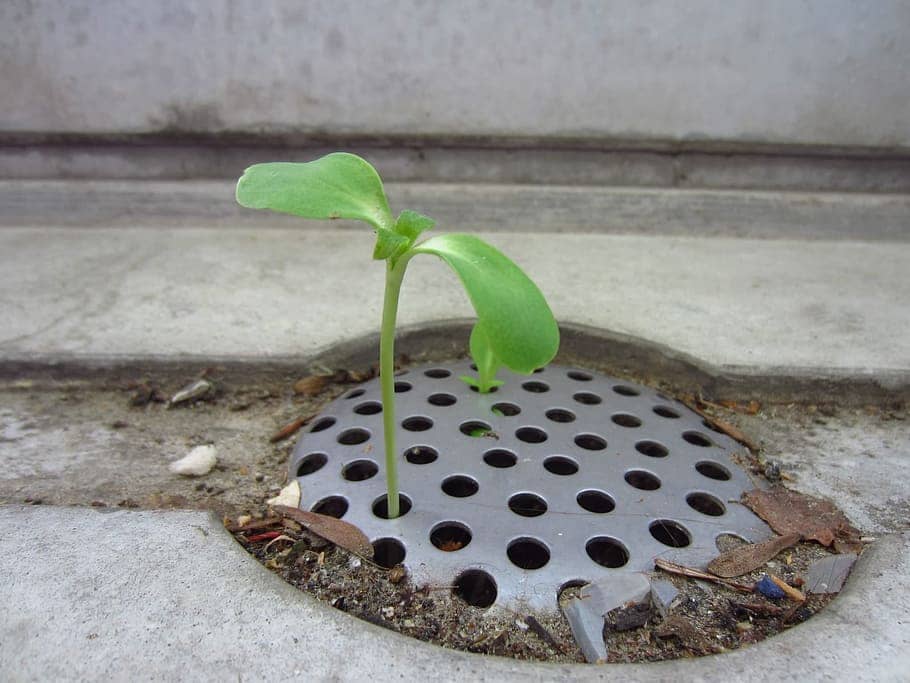
This blogpost is an excerpt from a larger post that you can find here: www.natesnursery.com/how-do-tree-roots-grow/
Roots Chase My Water and Septic Tank
This is a misconception that prevents many homeowners from planting trees or choosing certain species. The reality is that roots are opportunistic. This means they grow where the soil is least compacted, where there is moist soil, and follow the path of least resistance. When trees do get in water pipes it means there was an issue before that happened. If a PVC pipe cracked or started leaking, then a tree will take advantage of that constant moisture. This can be exacerbated by stress. If a tree is stressed from drought, it will be seeking water and look for available water in the soil.
Some tree species are water loving and thrive in wet compacted soil. Willow, Maple, Poplars, Mulberry, and Elms all fit this category. This makes it important to plant these trees far enough away from the septic tank that it will not be a problem.
Deep Rooted Trees
Jim Urban, FASLA, a noted tree and soil expert, said of deep rooted trees: “Trees are genetically capable of growing deep roots, but root architecture is strongly influenced by soil and climate conditions.”
Any tree can become a deep rooted tree if the soil condition allows, the problem is that few urban sites have soil that allow any tree to have a deep root system. Trees that are referred to as ‘deep rooted’ trees have roots that are genetically different and can withstand difficult soil conditions like compaction and lack of oxygen. Some trees that fit this description are Palo Verde, Chinese Pistache, Ash, Poplus, Sweet Gum, Elm, some Pines, and various Oak trees.
Roots Will Damage My Foundation
Christopher Overbeke goes into details about roots and their potential to damage property and foundations. He makes two distinct points in his article:
“Roots encountering a solid object will divert and follow the course of least resistance, thereby causing no damage. The continuous radial expansion of trunks and structural roots in contact with a structure and in a restricted space, however, may exert sufficient pressure to displace heavy structures.”
https://link.springer.com/article/10.1057/jba.2008.6
This can be easily avoided by planting a tree far enough away that the radially expanding structural roots do not come in contact with your foundation. We learned above that these roots are typically 2″ in diameter or less once you get 9′ or further from the trunk.
His next point talks to the indirect damage that trees can cause.
“Indirect damage is caused by the influence of a tree on soil moisture levels of a substrate prone to shrinkage and expansion. The ground is dehydrated through the transpiration of leaves abstracting moisture from the ground and…the ground contracts and settlement occurs. Usually winter rainfall results in full recovery so that the process is seasonal. Conversely, removal of a tree results in long-term recovery and expansion of the ground.”
https://link.springer.com/article/10.1057/jba.2008.6
This can be a large problem in soils high in clay due to it having a high plasticity index. Plasticity index measures how likely a soil is to be molded or shaped by external phenomena. However, the plasticity index is significantly lower in sandy soil. Below is a chart of the potential of a soil to shrink based on its plasticity index.
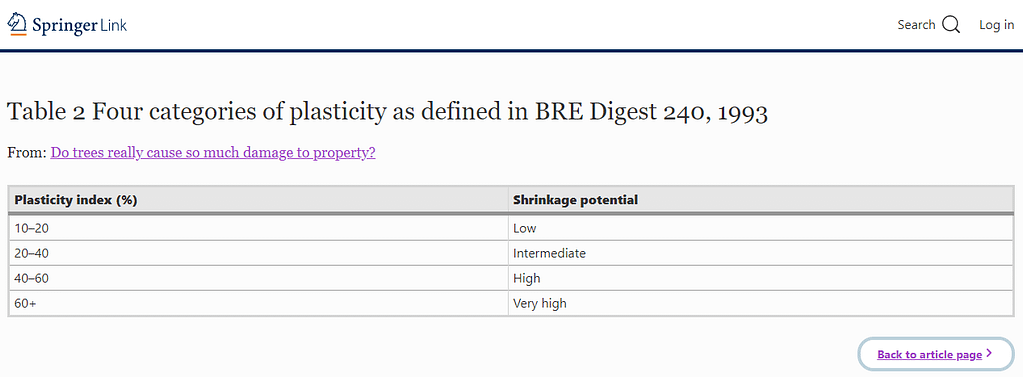
“Soils are highly relevant since vegetation cannot cause indirect damage to a property unless it bears upon a substrate that has potential for volumetric change. A root system abstracting soil moisture is likely to have rather less impact on the volume of a founding clay substrate with a P.I. of 15 per cent than that of a clay with a P.I. of 60 per cent.”
https://link.springer.com/article/10.1057/jba.2008.6
The question then becomes “What is the plasticity index of my soil? Rather than go into another 1,000 words explaining the process of how plasticity index is calculated, I’ll give you links to find out what it is based on tests that have already been performed through University of California Davis and the United States Department of Agriculture.
Using the chart below (specific to Apple Valley, CA) you can find the listed plasticity index of your specific location.
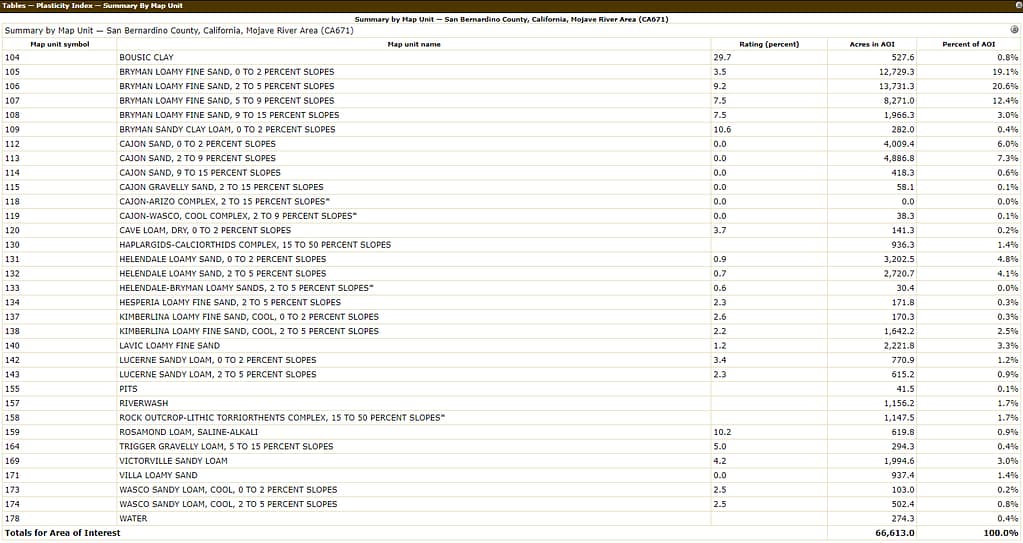
You can find your soil area’s number by locating it on this map (preview below): https://casoilresource.lawr.ucdavis.edu/gmap/ or the less user friendly version at https://websoilsurvey.sc.egov.usda.gov/App/WebSoilSurvey.aspx. Take that number and compare it to the list above. You can also learn more about your area’s general soil properties through this map: https://casoilresource.lawr.ucdavis.edu/soil-properties/
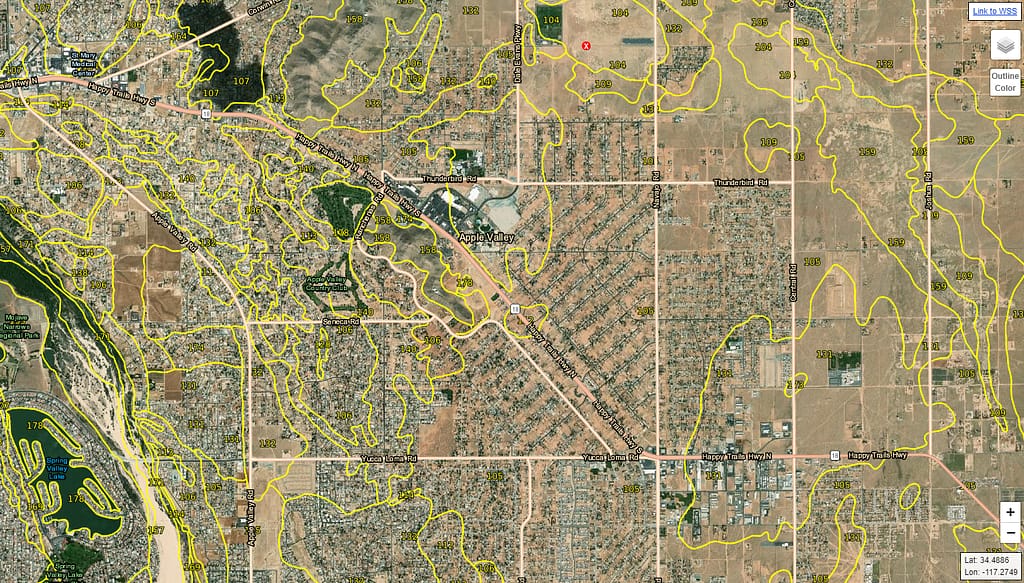
Of the area of interest (AOI) below (limited by acreage, otherwise I would’ve done the whole high desert) only 2.1% of the area had a plasticity index over 10. This means that it is unlikely that you will experience damage from swelling and shrinking of the soil. If you find you have a number not on the list or need help applying this information you can send an email to [email protected] for help.
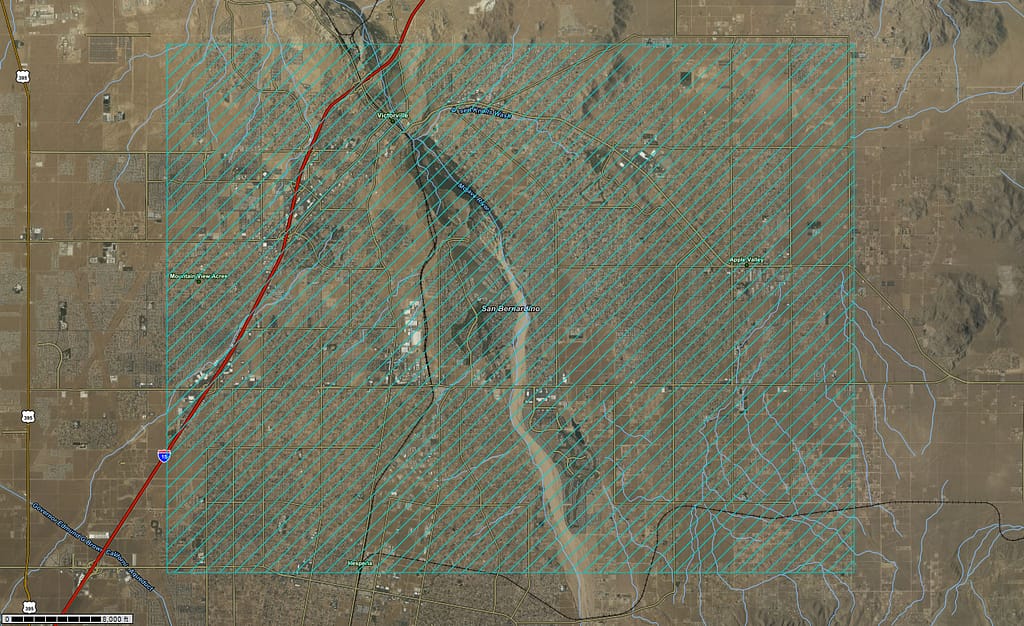
Roots often get a bad rap for doing things that destroy, when it is merely being opportunistic when given the chance. This incorrect information shouldn’t be something that keeps us from planting trees to beautify and shade our environment.
